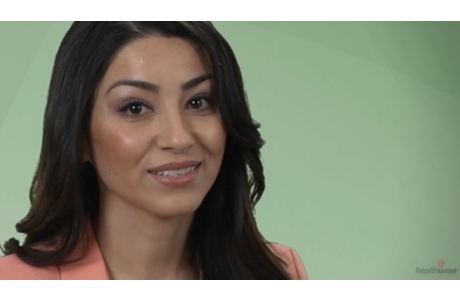Cervical Cancer Screening
Topic Overview
What is screening for cervical cancer?
Cervical cancer screening tests can help your doctor find and treat abnormal cell changes on your cervix before they develop into cervical cancer. These tests may be done as part of a pelvic exam.
What screening tests are used?
Tests include:
- A Pap test. This test looks for changes in the cells of the cervix. Some kinds of cell changes can lead to cancer.
- A human papillomavirus (HPV) test. The HPV test looks for certain high-risk viruses that can cause cervical cancer.
Who should be screened?
Your doctor will likely suggest that you begin screening at age 21 and continue until you are age 65. Most women who have had a hysterectomy don’t need to have tests. But if you have a history of pre-cancer cells or cervical cancer, even if you’ve had a hysterectomy, you may still need to have regular screening after age 65.
Some women have a higher-than-average risk for cervical cancer because of their medical history. Talk with your doctor if you don’t know your risk. Your doctor will suggest a screening schedule based on your age and risks.
If you are younger than 21 and are sexually active, it’s still a good idea to have regular testing for sexually transmitted infections.
How often do you need tests for cervical cancer?
Women 21 to 29
If you are in this age group, your doctor will likely suggest that you get a Pap screening test. If your Pap test results are normal, you can wait 3 years to have another test.
Women 21 to 29 usually aren’t tested for HPV, because they are at low risk of cervical cancer. The virus is common in younger women, and their immune system usually gets rid of it.
Women 30 to 64
Screening options for women in this age group may include:
- A Pap test. If your results are normal, you can wait 3 years to have another test.
- A high-risk HPV test. If your results are normal, you can wait 5 years to have another test.
- A Pap test plus a high-risk HPV test. Having both tests is called co-testing. If your results are normal, you can wait 5 years to be tested again.
Women 65 and older
Women ages 65 and older may no longer need to be screened for cervical cancer. Talk with your doctor about what’s right for you.
What do your results mean?
The results of your Pap test may come back as normal, unclear, or abnormal. If your results are:
- Normal, you can follow the regular schedule for your next screening.
- Unclear, it could mean that there weren’t enough cells to test or that there are small changes that aren’t certain. You may be able to wait until your next scheduled screening test. Or you may need to be retested sooner.
- Abnormal, it doesn’t mean that you have cervical cancer. More likely, it means that you have changes on your cervix that will either go away on their own, or that could, over time, lead to cervical cancer. You may need an HPV test to help your doctor know which it is.
The results of your HPV test will be negative or positive. If it is positive, high-risk HPV cells were found. If your results are:
- Negative, your doctor will let you know if you should follow the regular schedule for your next screening.
- Positive, your doctor will let you know what comes next. Your doctor may suggest a Pap test (if you didn’t have one), a follow-up HPV test, more testing (such as a colposcopy), or treatment.
Health Tools
Health Tools help you make wise health decisions or take action to improve your health.
References
Other Works Consulted
- Centers for Disease Control and Prevention (2013). Cervical Cancer Screening With the HPV Test and the Pap Test in Women Ages 30 and Older. Accessed Sept. 17, 2013: http://www.cdc.gov/cancer/hpv/pdf/HPV_Testing_2012_English.pdf.
- Sawaya GF, et al. (2015). Cervical cancer screening in average-risk women: Best practice advice from the Clinical Guidelines Committee of the American College of Physicians. Annals of Internal Medicine, 162(12): 851–859. DOI: 10.7326/M14-2426. Accessed June 19, 2015.
Current as of: December 19, 2018
Author: Healthwise Staff
Medical Review:Sarah Marshall MD – Family Medicine & E. Gregory Thompson MD – Internal Medicine & Kathleen Romito MD – Family Medicine & Kirtly Jones MD – Obstetrics and Gynecology
This information does not replace the advice of a doctor. Healthwise, Incorporated, disclaims any warranty or liability for your use of this information. Your use of this information means that you agree to the Terms of Use. Learn how we develop our content.
<script src=”https://content.healthwise.net/scripts/hw-conten



